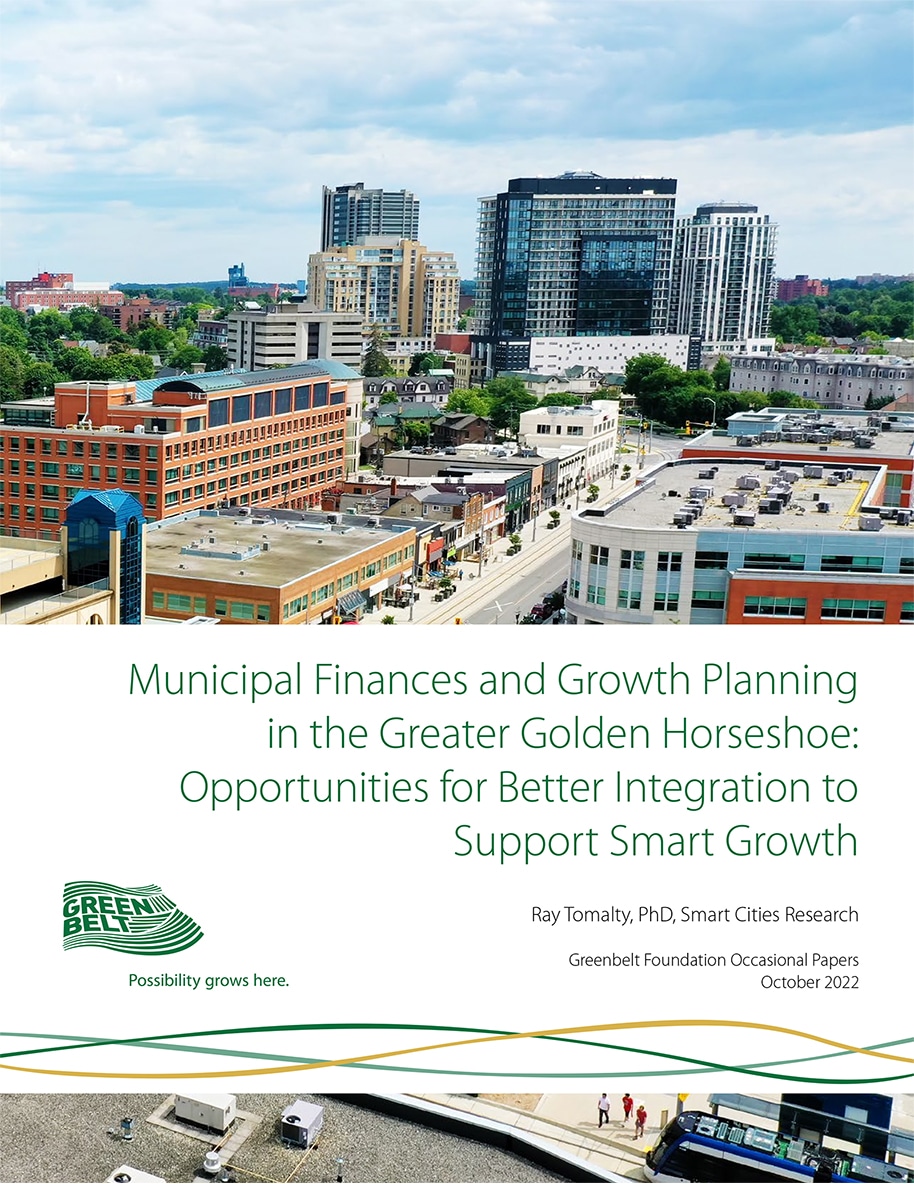Municipal Finances and Growth Planning in the Greater Golden Horseshoe: Opportunities for Better Integration to Support Smart Growth explores the link between the management of municipal finances and growth management, especially in Ontario’s Greater Golden Horseshoe (GGH) region. The report’s purpose is to show how growth planning and financial management are intimately interrelated and have the potential to be more mutually supportive than is currently the case.
This study explores this potential by asking the following questions:
- How does the municipal planning and fiscal systems work in the GGH?
- In what ways are the municipal planning and fiscal systems currently working together or failing to work together?
- How could better integration of those systems help achieve both planning and fiscal management goals?
- What steps need to be taken to seize these opportunities?
Research Approach
An urban sustainability consultant worked with an expert panel of thirteen academics and practitioners involved in municipal finance and land-use planning. The research involved case studies of nine municipalities in GGH to reveal whether fiscal instruments and processes are aligned with growth management goals.
Key Findings and Recommendations
Municipalities in GGH are at different stages of financial and land use planning integration. There are good practices to build upon, and there are also gaps in processes that require regulatory changes and development of guidance materials. The municipalities can address some of these issues at the local level, and leadership from the Government of Ontario is needed for a broader vision and framework.
The report outlines two main ways to achieve better synchronicity between growth planning and financial management:
- High-level opportunities to integrate fiscal sustainability into growth management processes.
- Restructuring of revenue instruments to promote smart growth practices and avoid subsidization of low-density development.
The report examined four categories of financial tools and processes:
- Integrated growth planning: This approach integrates infrastructure and financial planning in order to achieve more efficient growth outcomes. Recommendations include developing a handbook on municipal finances for smart growth and providing municipal staff professional training to transition to integrated growth planning.
- Development charges: Development charges calculated on area-specific basis, as opposed to city wide, give a more accurate representation of the cost of services to defined areas and encourage more efficient land development. Recommendations include that the Government of Ontario develop a handbook on municipal finances for smart growth and provide municipal staff professional training to transition to integrated growth planning.
- Property taxes: Many multi-residential units pay higher tax rates compared to lower density units, which increases the operating cost of those buildings. This makes them less attractive for investment and may lead to reduced density in an urban area. The report recommends that the Government of Ontario amend the Municipal Act to require that municipalities apply the same tax rate on multi-residential properties, including old and new developments, as is used for other residential properties.
- User fees: User fees can generate more reliable revenue sources for municipalities to pay for infrastructure services and incentivize smart growth outcomes. For example, stormwater fees generate revenue and encourage the adoption of on-site controls to reduce runoff. The report recommends that the Government of Ontario amend the Municipal Act to require municipalities with stormwater management to impose user charges as a sustainable revenue source to fund those services.
As the long-term costs related to inefficient growth patterns become increasingly obvious over time, the conversation on how to stem sprawl and move to more sustainable forms of growth will likely intensify. This report tries to bring attention to one strand of this conversation, namely the use of financial processes and instruments to support Smart Growth outcomes.

